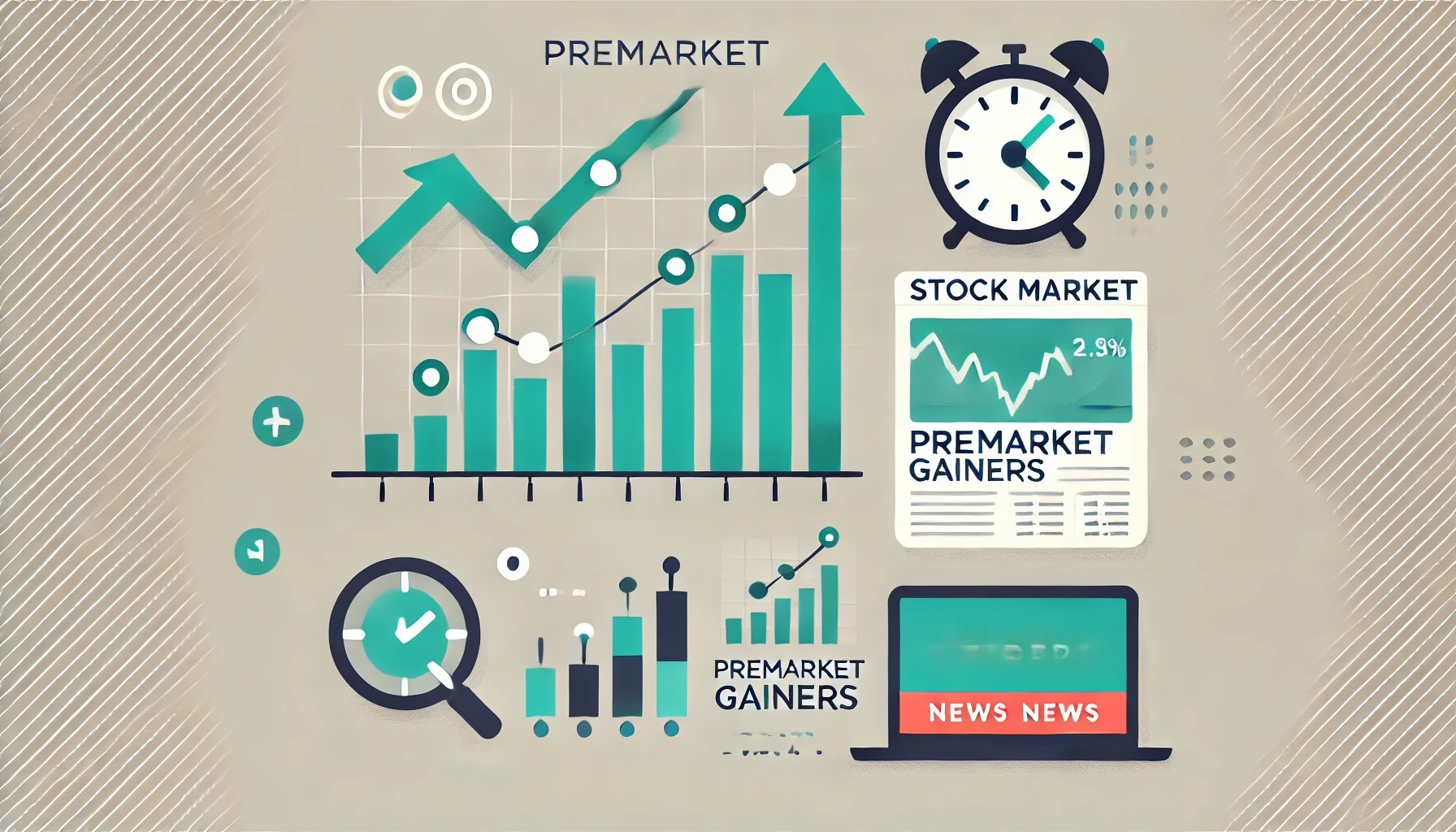Your cart is currently empty!
Premarket Gainers: What They Are and Why They Matter

Premarket gainers are stocks that experience significant price increases during premarket trading, which occurs before regular market hours (typically from 4:00 AM to 9:30 AM EST). Monitoring these gainers is a popular strategy among traders and investors looking to capitalize on early market movements. Understanding the drivers behind premarket gainers and how they can impact broader market trends is crucial for those who want to optimize their trading strategies.
1. What Are Premarket Gainers?
Premarket gainers are stocks that see a price rise before the official market opens. During premarket hours, trading volumes are generally lower than during regular market hours, which can lead to more volatility and exaggerated price movements. Stocks can rise premarket for various reasons, such as:
Earnings reports: Companies that release positive earnings before the market opens often experience a surge in their stock price as investors react to the news.
Mergers and acquisitions: News of a potential merger, acquisition, or partnership can drive stock prices up.
Upgraded analyst ratings: Analysts from major firms may release new ratings or price targets for stocks, causing a premarket rally.
Macroeconomic factors: Global events, such as changes in interest rates, geopolitical developments, or commodity price fluctuations, can also influence premarket activity.
2. Why Premarket Gainers Matter
Premarket gainers can provide insights into the potential direction of the broader market once regular trading begins. Early trading activity often sets the tone for the day, as large institutional investors and traders adjust their portfolios based on news or events that occurred overnight. Traders who are well-versed in analyzing premarket gainers can capitalize on early momentum, particularly if they expect the stock to continue its upward trend throughout the trading day.
However, there are risks associated with trading in the premarket:
Low liquidity: Premarket trading typically involves fewer participants, leading to lower liquidity. This can result in higher spreads and more volatile price swings.
False signals: Premarket gains can sometimes be misleading. Just because a stock rises before the market opens doesn’t mean it will continue to perform well during regular trading hours.
3. Strategies for Trading Premarket Gainers
Investors and traders can adopt different strategies to trade premarket gainers effectively:
News-driven trades: Monitoring news catalysts such as earnings reports, press releases, and analyst upgrades is key to identifying premarket gainers. Platforms like Bloomberg, Reuters, and financial news websites often report key events before the market opens.
Technical analysis: Using technical indicators like moving averages, Relative Strength Index (RSI), and volume trends can help traders identify potential entry and exit points in premarket trades.
Setting alerts: Some traders set alerts for premarket movers to get notified when a stock rises by a certain percentage. This allows them to act quickly when momentum builds.
4. Examples of Premarket Gainers
On any given day, a variety of stocks can emerge as premarket gainers across sectors. Some of the top premarket gainers are often tech stocks, biotech firms releasing new clinical trial data, or companies that announced major corporate deals. For example, if Tesla posts strong delivery numbers ahead of its earnings report, it may see a surge in premarket trading. Similarly, a biotech company reporting positive trial results for a new drug can become a top premarket gainer.
Conclusion
Premarket gainers offer valuable insights for traders looking to make early moves in the stock market. While trading during premarket hours can be riskier due to low liquidity and volatility, those who can effectively identify and act on news-driven opportunities can capitalize on early price momentum. For investors seeking to enhance their market timing, services like rajeevprakash.com provide tools and insights that can help navigate these volatile periods and identify key trading opportunities.
Premarket trading is not suitable for everyone, but it can be a powerful tool for those who understand its mechanics and risks.

Mr. Rajeev Prakash
Rajeev is a well-known astrologer based in central India who has a deep understanding of both personal and mundane astrology. His team has been closely monitoring the movements of various global financial markets, including equities, precious metals, currency pairs, yields, and treasury bonds.
